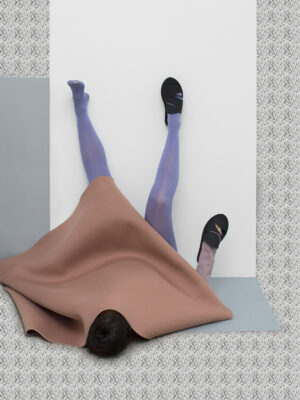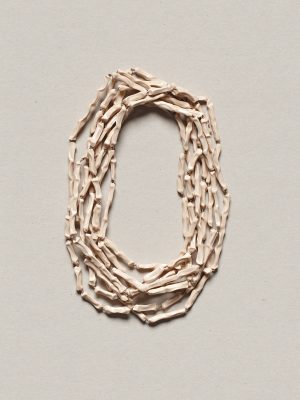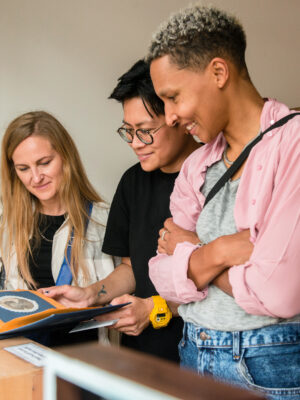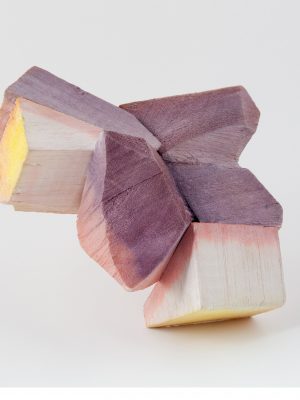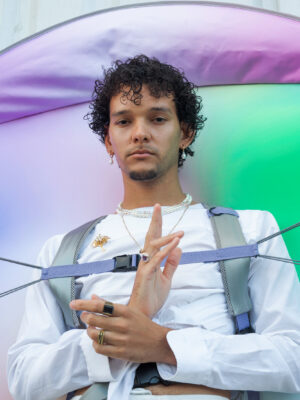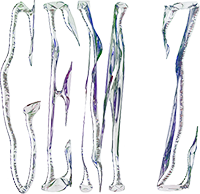Veronika Muráriková: How did your work routines change during the lockdown, and where did you spend it?
Maria Nina Václavková: For almost two months, I was at home in Prague. Half of my week, I worked online for the materiO’ which is a center for innovative materials and technologies where we do research and educate people and businesses about the possibilities of new materials development with a focus on environmental impact. The other half, I tried to keep up with my design brand. However, it was very difficult, and basically, I stopped all processes. At the beginning of the lockdown, I was helping with sewing face masks, and after that, I just simply didn’t have the energy and the motivation to think or do anything… I felt like perhaps it doesn’t make sense.
___STEADY_PAYWALL___
For instance, the manufacturing of my prototypes was stopped because the company I worked with started with the production of masks and also, some of the materials I use are from Italy and Portugal, so I couldn’t order those.
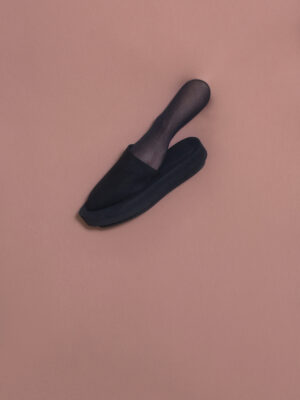
VM: Can you talk me through the project you had been working on before the pandemic outbreak?
MNV: I’m still developing the ideas outlined in my graduation project, OFFCUTS. The idea is simple – to create shoes with a lesser impact on the environment. It’s an important building stone within my work. I observe the relationship we have with objects. How do these material things change, how volatile and disposable they are becoming, and the lack of knowledge we have about their origin even though we encounter most of them daily. Can we have more emotionally durable relationships with our objects?
I’m trying to make people realize this and make it a natural part of their lives through sensory experiences like haptics, surface, and material structure. If you think about it, the materials we touch the most often are metal and glass in our smartphones, which is not a really pleasant haptic experience. Moreover, the processes it mediates are virtual, so we can observe a phenomenon called the touch crisis, which is now even more intensified by the current situation.
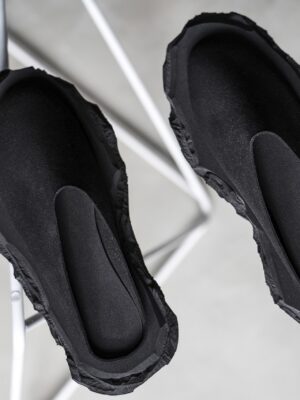
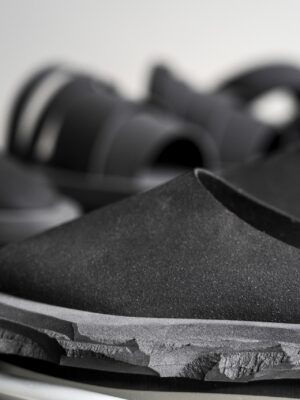
If you think about it, the materials we touch the most often are metal and glass in our smartphones, which is not a really pleasant haptic experience. Moreover, the processes it mediates are virtual, so we can observe a phenomenon called the touch crisis, which is now even more intensified by the current situation.
VM: Has this situation influenced your thinking and designing process? Because I believe many people were feeling stuck or frustrated, and everyone did go differently about it…
MNV: I used this time to go deeper and get a more distanced view of what I was doing. It’s been already some time, that I’m developing this project and I always try to take the next step, to push things forward but sometimes you compromise and perhaps make some concessions because of the deadlines, exhibitions or fairs and suddenly, I had the time to reflect and ask myself if it’s still me if I haven’t made too many compromises already.
What would I do differently if I start the project today?
And indeed, I decided to change some things. I realized that it’s not just necessarily about creating an interesting, beautiful, and ideally harmless object, but about a meaningful business model and the whole environment around it. So, for example, will I take back the worn shoes from my customers? What do I do with such material? Where can the customers go and have their shoes repaired?
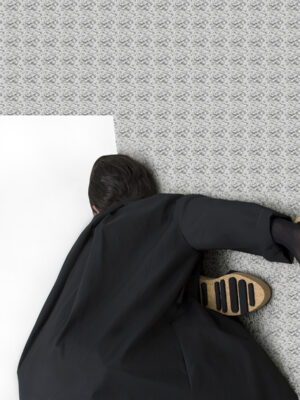
VM: How do you imagine the business model of the future? What would differ from what is the norm now?
MNV: I think the future model could be, of course, not with everything, renting things. Some brands already work with this concept. Let’s say you rent a pair of jeans. You have them, you wear them, but the material they are made of still belongs to the brand which manufactured them. Once they are worn, you just bring it back to the store, and they will reuse their material. This is quite normal and frequent in jewellery making. You have some old scraps of precious metal, perhaps a golden tooth or you inherit some jewellery and you just collect them, come to a jewellery artist, and commission a new piece. The preciousness of this particular material is the reason why people handle it so warily. The same goes for the jewellery artist, who then collects the golden dust from the workbench. But with other materials, we are not so conscious.
I realized that it’s not just necessarily about creating an interesting, beautiful, and ideally harmless object, but about a meaningful business model and the whole environment around it.
VM: It’s an interesting idea for sure, but I feel like many brands are trying to target as many customers as possible, the market has become very globalised and what you are saying is to focus more on the local production and markets.
MNV: Especially now, there will be a bigger pressure on local production. The corona crisis has shown how connected and intertwined the whole world is, how fragile the structure is, and how unstable it is to be dependent on outsourced materials or services. But don’t get me wrong, I just think it needs to be balanced, and things that can be done or sourced locally should be, but that doesn’t mean we have to be too rigorous about it. It’s enough to choose consciously.
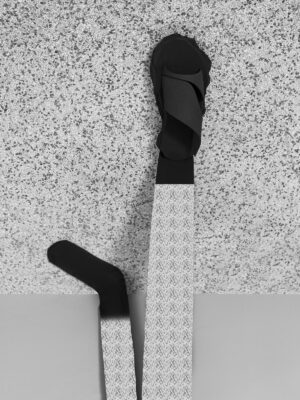
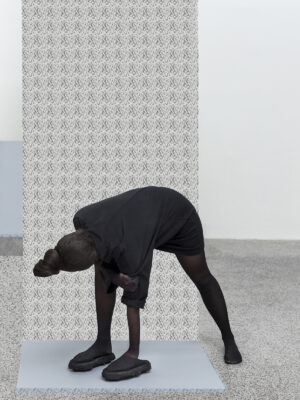
VM: How do you feel about all the online initiatives? What impact do you think, is this going to have on creatives and the market if any?
MNV: To be honest, I admire people who in a situation like this, can take the initiative and have the motivation to create a new platform or project. Speaking of design, brands, or art, I think ‘direct-to-customer’ sales will be strengthened a lot. Digital and direct selling is becoming crucial.
VM: How can materials themselves be helpful during a crisis such as a pandemic?
MNV: Currently trending now are bio solutions. All the processes in nature are developed over hundreds of millions of years, they are super effective and interconnected. We have to observe, understand, and learn from it. It’s not necessary to come up every time with ‘our’ new solutions. It’s enough to get inspired by the complex solutions that nature is providing us with and copy such mechanisms.
A shark’s skin has such specific micro and nanostructure that no pathogens can retain on its skin. If you think of whales, for instance, they are overgrown with many different structures, and that slows them down. But for a shark, the speed is essential, so it needs to be absolutely clean! The scientists are looking into the possibilities of replicating this effect which can be possibly used as a surface material for all the handrails in public spaces to avoid the spread of germs. It’s a fascinating world!
